Blanco white cleaner
John Needham Pickering, a Volunteer (predecessor of the Territorial) thought his family firm that produced polishing compounds and rouges for the cutlery trade, could produce something better than the traditional pipeclay for whitening the Slade Wallace buckskin equipment the Army then wore. They developed a pure white compressed block product that could, by the addition of a little water, be applied with a sponge, rag or brush. They sold it to the local Hillsborough barracks who adopted his product and their extra white webbing was admired and led to it’s adoption by the rest of the army in the 1880’s. For ten or fifteen years a Blanco-pipeclay controversy went on in the barrack-rooms, and Blanco won.
The product was sold in cake form shown on this page as well as liquid and paste form in a squeezable tube. The period of production of the two other forms is unclear but with certainty after 1900.
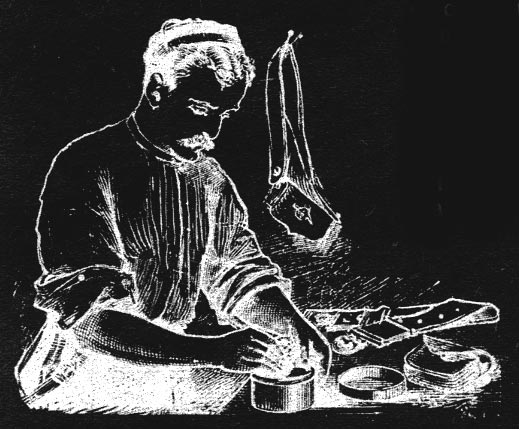
It is owned by Denise Wey who recounts it was given to her by her Grandmother as a keepsake who told her it had always been for whitening (and as a child she always whitened Denise’s shoes from it). Denise’s Great Granddad was with the Durham Light Infantry pre-1900, then only a boy (photo below) and her father remembers it being in her Great Grandmothers house, when he was a boy and always used for whitening.
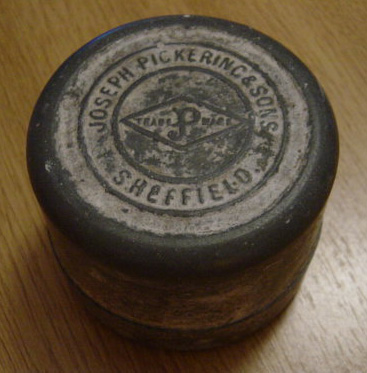
Photo: Denise Wey
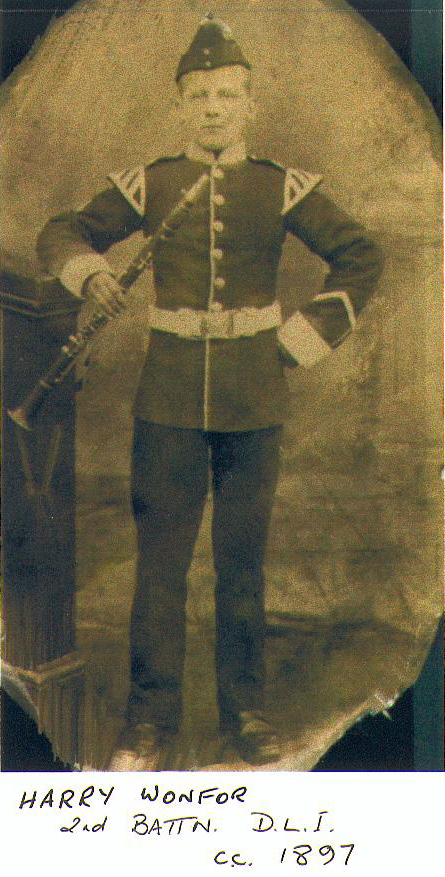
Photo: Denise Wey

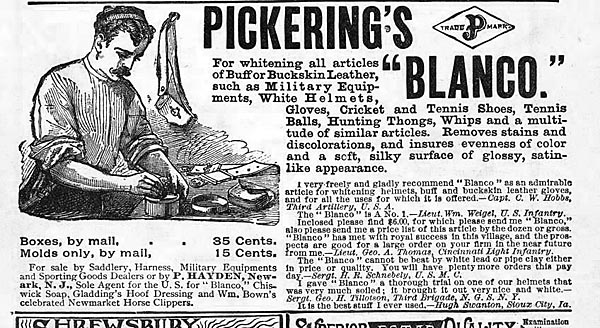
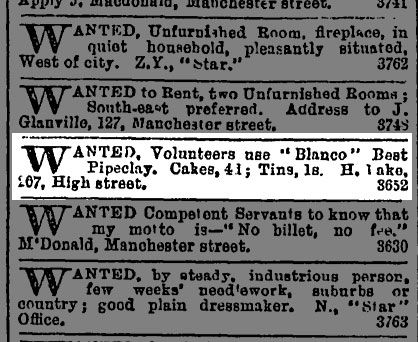
By 1894 the small ad changes and simply reinforces Blanco’s matchless whitening ability.
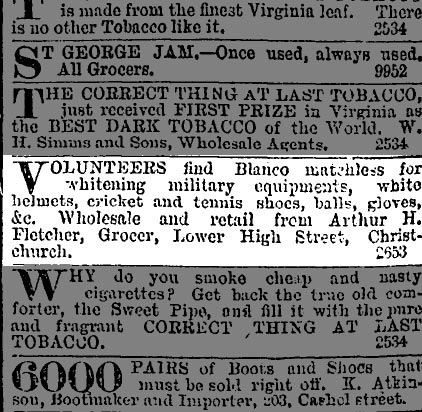
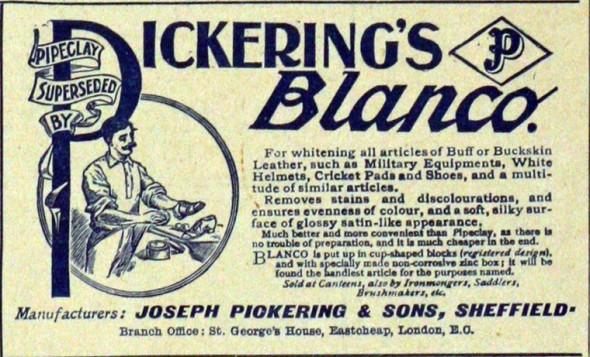
Photo: Grace’s Guide
This advertisement of 1898 still refers back to pipeclay and so is clearly aimed at winning users over to the convenience of Blanco. Its distribution is both military (via canteens) and domestic. It also refers to a branch office in London of St George’s House, Eastcheap, London EC. This old building destroyed in WW2 is now replaced by newer property bounded by Eastcheap, Pudding Lane and Botolph Lane and occupied by Lloyd’s TSB Bank Plc and the development called St. George’s House, 6 – 8 Eastcheap, London EC3M1AE.
Photos show Eastcheap in flames in the Blitz and nos 2-4 Eastcheap in ruins.
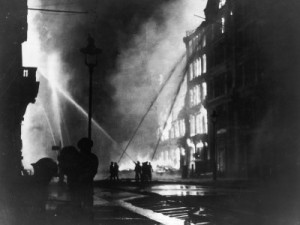
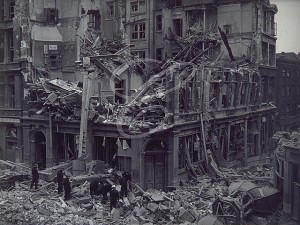

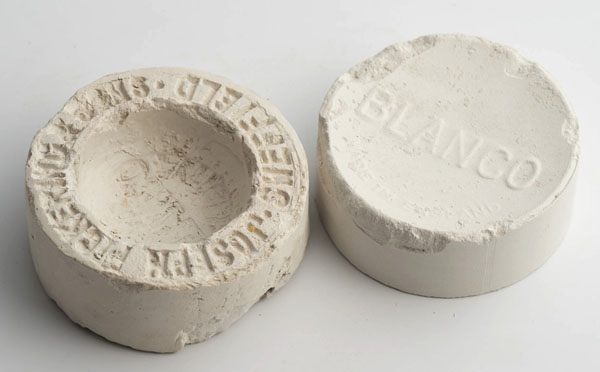
Photo: David Pratt – Illustrates (left) the original deep well mould type and the more modern shallow well type. It is not known when the design changed (and improved to a more sophisticated fine particulate, highly compressed block) but the old type was in use in WWI and the new in WWII.
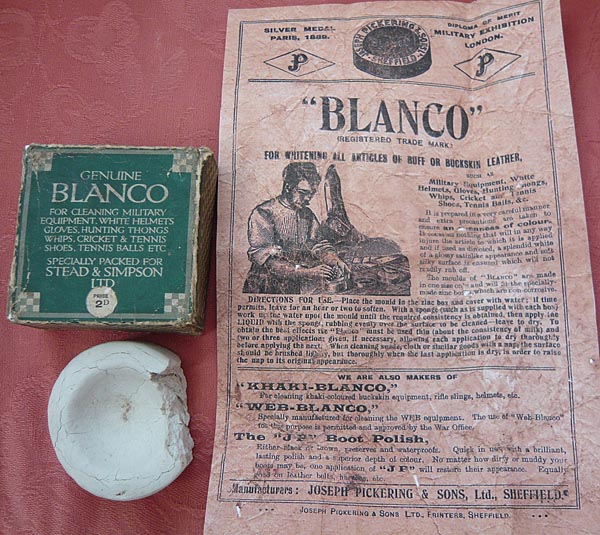
Photo: Martin Lowe
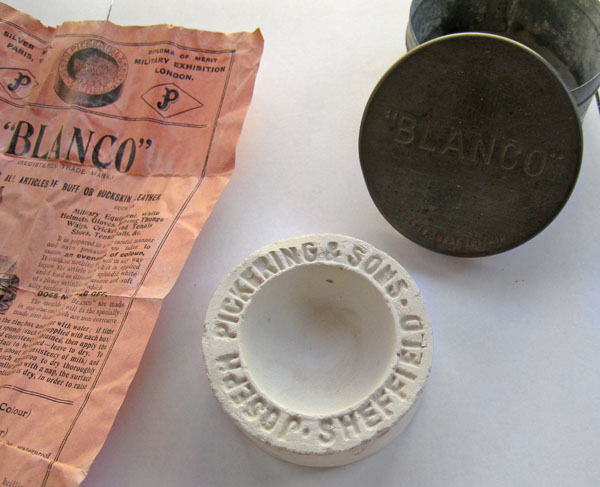
Photo: Mick Burgess
And here is a zinc coated container from Stig Roadie’s collection, later than the one illustrated at the top of this page. The company trade mark has now switched from the stylised “P lozenge” to the product name of “Blanco”, marking the significance of the product to the company.
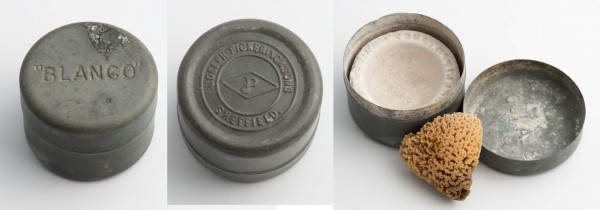
Photo: David Pratt
A post-1900 Blanco wrapper.
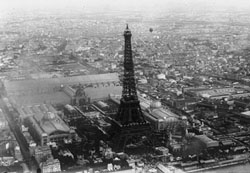 It proudly boasts of winning a silver medal in the 1889 Exposition Universelle Internationale, Paris. This was a significant World Exposition event with an astonishing 32 million visitors – the temporary Eiffel Tower was the principal attraction. A large portion of the exhibit hall within the Palace of Mechanical Industries contained Thomas Edison’s electrical inventions, including various electric lamps for use in houses. Variations of the telephone also were shown. During the Paris Exposition Europeans were exposed to the phonograph for the first time.
It proudly boasts of winning a silver medal in the 1889 Exposition Universelle Internationale, Paris. This was a significant World Exposition event with an astonishing 32 million visitors – the temporary Eiffel Tower was the principal attraction. A large portion of the exhibit hall within the Palace of Mechanical Industries contained Thomas Edison’s electrical inventions, including various electric lamps for use in houses. Variations of the telephone also were shown. During the Paris Exposition Europeans were exposed to the phonograph for the first time.
Also, the award of a Diploma of Merit from the Military Exhibition, London, is heralded.
Also can be seen on the illustration of the mould is the number of the registered trade mark of ‘Blanco’ – 91774
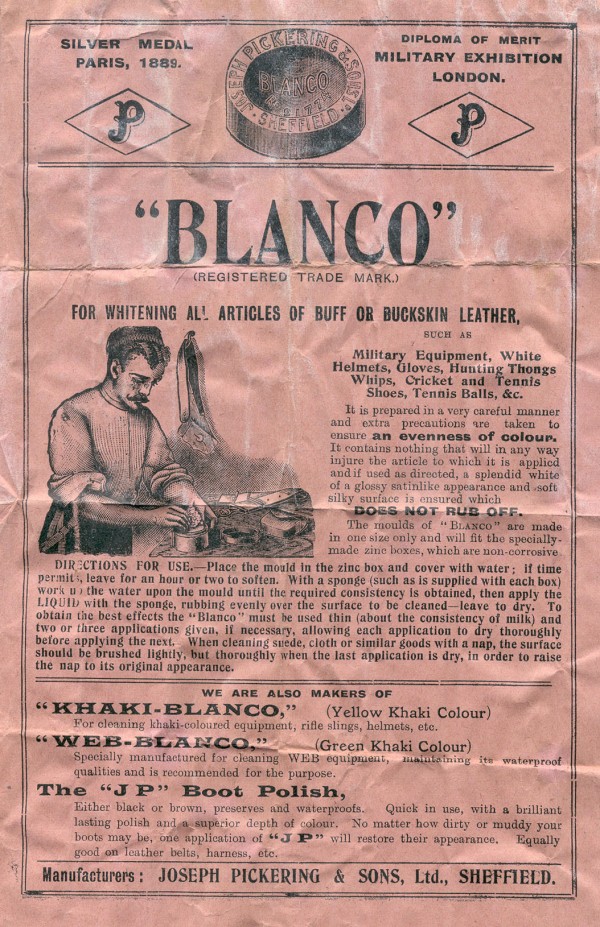
Photo: Mick Burgess
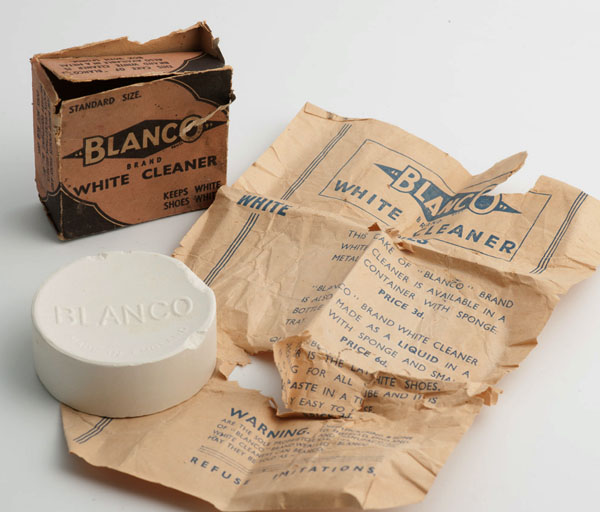
Photo: David Pratt
Here is an advert from the Evening Post, Wellington, New Zealand 1898 that lists Blanco for White Shoes and Belts. A later New Zealand 1908 advert also lists Nugget, Blanco, Laura and Lilly White products for whitening boots and shoes.
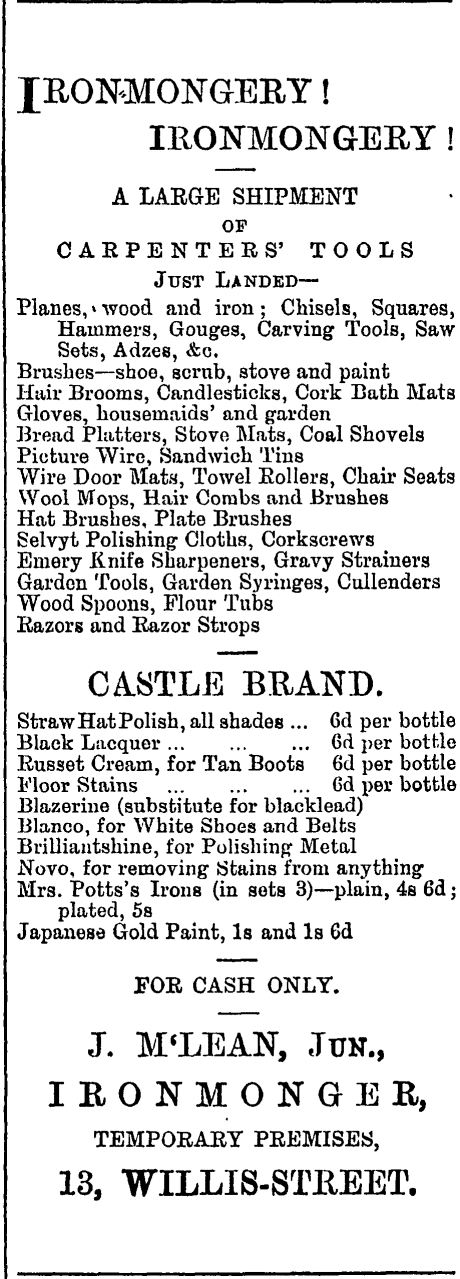
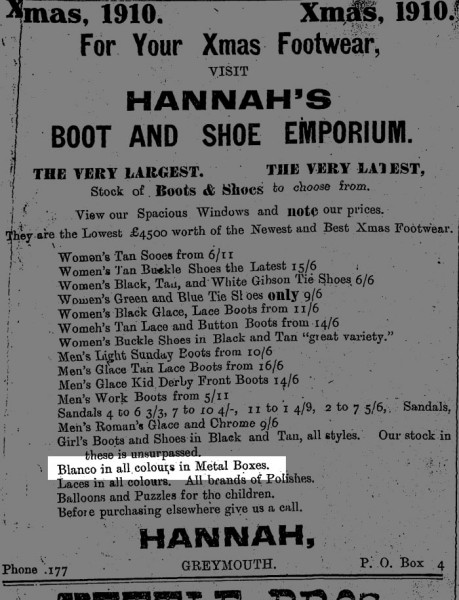
And this January 1912 lists the Blanco colours available: white, grey, champagne, heliotrope (a pink-purple or vivid lavender) and green. The price of 3d is a penny cheaper than the 1890 price of 4d.
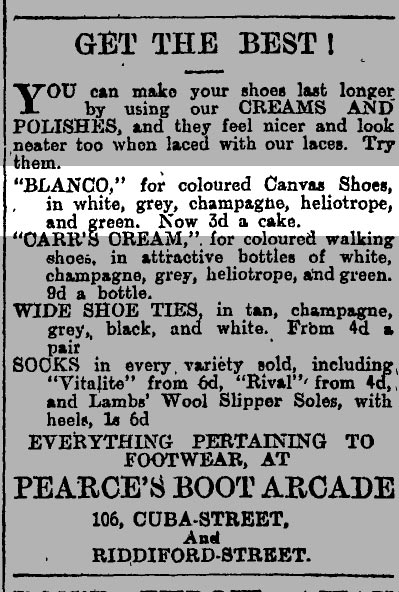
The lid says “Keeps white shoes white”
BLANCO brand white cleaner
Does not rub off
and inside the lid:
Brush off all dirt – rub a wet sponge over the “Blanco” until a creamy liquid is obtained. Apply this evenly with the sponge and allow to dry.

Photo: David Pratt
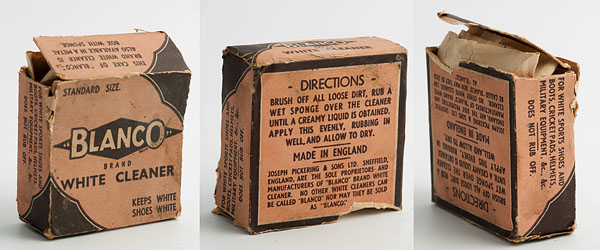
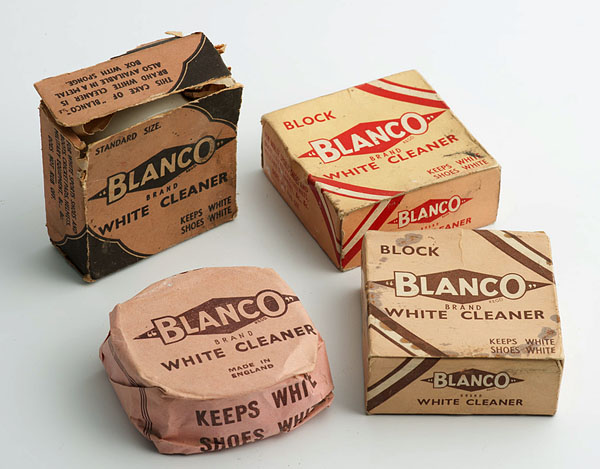
Photos: David Pratt
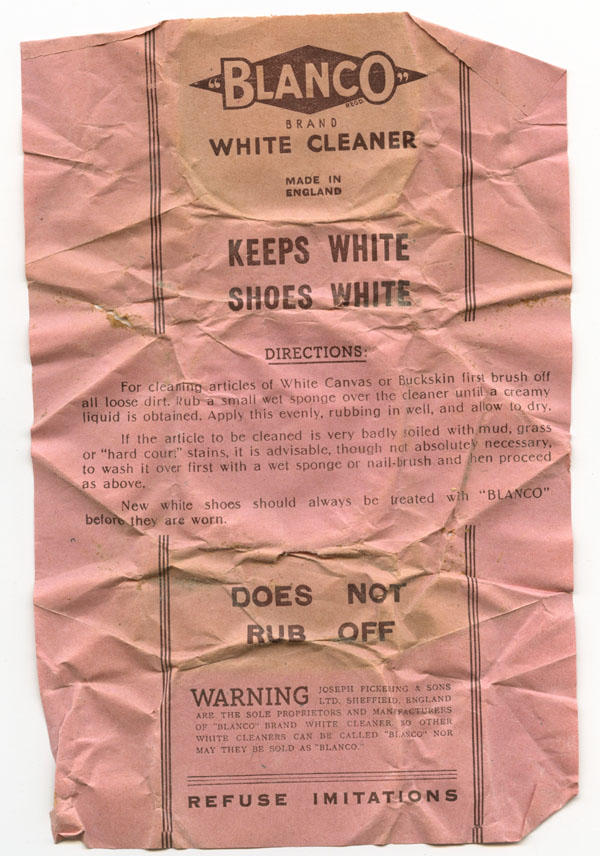
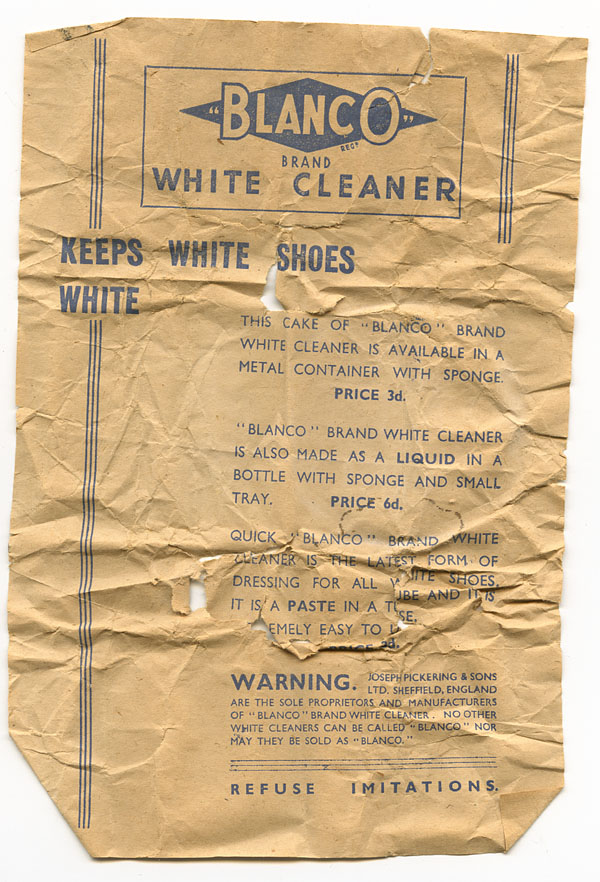
The above wrapper describes not only the white cake product in a tin for 3d but also liquid supplied in a glass bottle with sponge and tray for 6d and a “quick” paste versions in a tube for 3d too.
